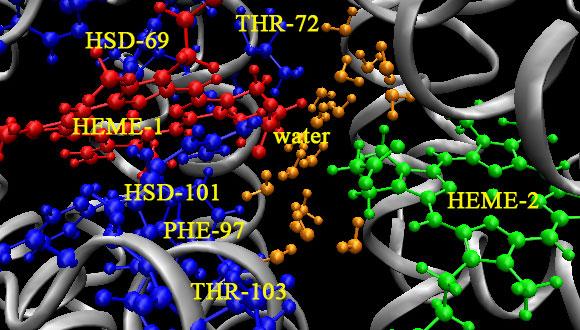Chemical Physics Seminar: Liquid and Solid State NMR Investigations of Electrolytes for Beyond Lithium Ion Applications
Prof. Jean Maruani, The Honorary Director of Research, Pierre and Marie Curie University, Paris
Abstract:
The Dirac gyromagnetic factor, fine-structure constant and gravitational invariant: deviations from whole numbers
The Dirac equation [1], which was derived by combining the relativistic invariance condition with the quantum probability principle, explained the half-integer spin of fermions and predicted antiparticles. In previous papers [2a-c], we have conjectured that the electron is a massless charge spinning at light velocity in the positron field, this internal motion being responsible for the rest mass. The wave beat between the electron and the positron [3] has been shown to be the reason for the gyromagnetic factor being ge = 2. Very accurate measurements and quantum electrodynamics computations have shown that actually ge departs from 2 by: g ≡ (ge - 2) / 2 ≈ 0.001159652181 ≈ 1/ 2a + P/ 2(a)2 + A/ 2(a)3 + … (within 1 ppb) [4], a being the fine-structure constant inverse: a ≡ -1 = hc / kee2.
The fine-structure constant was first introduced by Sommerfeld to express line splittings in atomic spectra. But its inverse was given its current significance by Eddington [5], who proposed the full integer value of 137 on theoretical grounds. The primeval prime number 137 is endowed with a number of special properties [2d]. However, the measured value of a departs from 137 by ~ 0.3 ppt: a ≡ (a - 137) / 137 ≈ 0.0002627664234. In this paper, we propose an expansion of this increment similar to that derived for ge: a ≈ (1/2) ( /137)2 - (9/16) ( /137)4 … (within 0.4 ppb). A theoretical explanation is in progress.
Among the mathematical properties of 137 [2d] is a relation to the Mersenne Catalan series, Mn = 2n - 1. The sequence of these numbers is: M2 = 3, M3 = 7, M7 = 127, M127 ≈ 1.7014118 x 1038. The sum of the first three terms is 137, which approximates the strength of the electromagnetic force [6]. In previous papers [2], we have proposed equivalents of to express the gravitational force, e.g.: p = Gmp2 / hc. The inverse of this invariant: dp ≡ p-1 ≈ 1.69328 x 1038 (within 15 ppm due to the inaccuracy in G), appears very close to M127 ! The relative deviation: d ≡ (M127 - dp) / M127 ≈ 0.00478021, can be expanded in terms of 137 (as was a) or of a (as g): d ≈ (1/3) (2/137) - (2/5) (2/137)2 ... (within 0.7 ppm) ≈ (2/ a) + (5/ a)2 … (within 0.3 ppm).
The gravitational force Fg is related to the electromagnetic force Fe also in that Fg is to Fe as Fe is to the Planck force FP [2b-d]: Fg / aFe = aFe / FP = 1 / dp, a and dp being defined above. This is due to the fact that Fe is proportional to the square of the particle rest energy E0 = m0c2 expressed in terms of the much larger Planck energy: (hc/G)1/2c, while Fg is proportional to the fourth power of this ratio [7]. All this comforts the Pythagorean view [4-6] that physical constants are not due to chance, but determined by mathematical properties.
------------
[1] Dirac, P. A. M. The Principles of Quantum Mechanics; Clarendon Press: Oxford, 1st edition 1930, 4th edition 1958; chaps 11-12.
[2] Maruani, J. (a) Prog. Theor. Chem. Phys. B 2012, 26, 23-46; (b) ibid. B 2013, 27, 53-74; (c) J. Quantum Matter 2015, 4, 3-11; (d) J. Chin. Chem. Soc. 2016, 63, 33-48; and references therein.
[3] de Broglie, L. L’Electron Magnétique: Théorie de Dirac; Hermann: Paris, 1934; chaps 9-22.
[4] Todorov, I. Hyperlogarithms and periods in Feynman amplitudes; Opening Lecture at QSCP XX (Varna, 2015); published as CERN-TH-2016-042; and private communication.
[5] Eddington, A. New Pathways in Science; Cambridge U. P., 1935; chap. 11.
[6] Sanchez, F. A coherent resonant cosmology approach and its implications in microphysics and biophysics; to be published in Proceedings of QSCP XX (Varna, 2015); and private communication.
[7] Macken, J. Prog. Theor. Chem. Phys. B 2015, 29, 219-245; and private communication.


